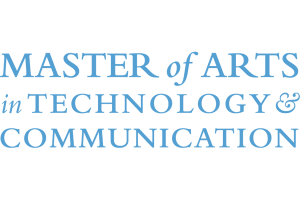User testing: you can do it, too!
MATC students in Fall 2 are conducting user tests right now in JOMC 721: Usability and Multimedia Design. Four weeks of this course are dedicated to usability and producing a usability study. Many students do this study on their own employer’s site, just one example of how the MATC can bring value to your professional career and build your subject matter expertise and credibility at work.
A website’s usability -- how easy it is to use -- affects the design and ultimately the performance of a digital product. Design aesthetics, or visual appeal, is important but means nothing if the product fails to work for the user. Poorly designed websites yield frustrated, disengaged users and low conversion rates. On the other hand, well-designed, user-friendly sites build brand credibility, audience retention and loyalty, and increase conversions.
Usability expert Jakob Nielsen’s research, studying website usability test sizes, finds that five users will reveal approximately 85% of usability problems on a website (“Why You Only Need to Test with 5 Users”). This is based on the likelihood that a single user would identify 31% of the problems. If only five users can reveal a majority of usability issues, it is evident that user testing does not need to be extensive or expensive to be effective.
Very often, budget and time are barriers to site testing and optimization. But they have to be; one user can discover a third of a site’s usability problems. While five is the optimum number of test users from a cost-benefit analysis, any testing is better than none.
“The most striking truth…is that zero users give zero insights,” Nielsen says. His study indicates that one does not need to be a usability expert to do usability testing or to understand key usability principles. User testing can improve any site by providing digital designers and communicators with valuable information about the navigation, layout, functionality, convenience, and accessibility.
In JOMC 721, MATC students study the value of user testing and learn the steps and best practices of effective tests. Students work in pairs to design a user test script, conduct tests, and prepare a comprehensive report on a website of their choice. Each student tests three participants, accomplishing the minimum requisite of five people needed to uncover most usability problems.
A great opportunity for user testing is in pairing the qualitative data it provides with quantitative data provided by analytical tools like Google Analytics. These tools offer plenty of easy-to-access quantitative data about who is visiting a website, how they got there, and their behavior during visits. User testing can help communicators understand why they see these numbers and how to improve them, leading to informed decisions for site improvements.
Another significance of the feasibility of user testing is the benefit of testing competition. In testing five users, one can easily and cheaply evaluate how websites perform compared to competitors. By learning what others are doing and not doing well, communicators can focus on design changes that will help the site gain a competitive advantage.
Check out these user-testing resources that MATC students consult for their usability studies:
